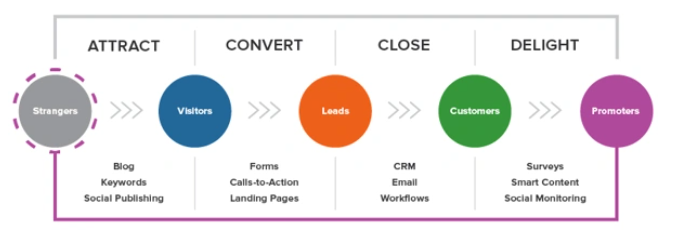Boosting Local Leads with Effective Website Optimization

In the digital age, businesses must have an active online presence in order to attract local customers. Whether you are a small coffee shop or a large law firm, getting more leads from local searches on your local website can make a big difference to your bottom line. Learn how to do this properly here:
Claim and Optimize Your Google My Business Listing
With the free tool Google My Business (GMB), companies can control their online appearance on all Google platforms, including Maps and Search. Here's how to maximize your experience:
a. Claim Your Listing: It is the initial stage to make your business searchable in local searches.
b. Complete Your Profile: Ensure your GMB profile contains all the relevant info. Business Name(Address Phone Number Website Hours Category).
c. Include Photos: Upload photos of your business with good quality The more pictures of your storefront, interior, product, and services the better but people actually pay you more to click on your ads this way.
d. Gather and Address Reviews: Motivate happy customers to leave good reviews, and answer them too. Good reviews = Good credibility + more visibility.
Use Local Keywords
Keywords form the backbone of SEO, and local keywords are a must to attract customers in your vicinity. Here’s how to integrate them:
a. Research Local Keywords: Use a tool like Google Keyword Planner or Ahrefs to find keywords that are relevant to your business and location.
b. Use Keywords Naturally: Your site content should include your keywords in different forms, meta descriptions, headers URLs, etc. However, be sure not to stuff it so full of keywords that it will hurt your ranking.
c. Optimise Location Pages: If you have many locations — create a specific page for each one of these locations. Add exclusive location-specific content.

Optimize for Mobile
More people are using their mobile devices to search for local businesses. Ensuring your website is mobile-friendly is essential:
a. Adaptive design: A Web layout that will be adjusted based on the device screen, making sure the elements like text, and images fit within the screen. This makes sure that your site works smoothly on desktops and mobile.
b. Speed: By optimizing images and minimizing redundant code, your site will load faster. Chances are mobile users browsing your site will abandon ship if it takes more than three seconds to load.
c. Simplified Site Navigation: It is important that your website is easy to use so, if you can simplify some elements on the page like page navigation this will make for a better user experience for your user. Ensure that users can quickly access your contact details, locations, and store hours.
Local Content Marketing
Creating content that resonates with your local audience can drive more traffic to your website and generate leads:
a. Blog About Local Events and News: Write blog posts about local events, news, and issues. This positions you as a community-focused business and attracts local visitors.
b. Local Case Studies and Testimonials: Showcase testimonials and case studies from local customers. This builds trust and shows potential customers that you have a track record of success in their area.
c. Host Local Events: If applicable, host or sponsor local events and promote them on your website and social media. This can drive local traffic and engagement.
Leverage Social Media
Social media platforms can be powerful tools for local lead generation:
a. Engage with Your Local Community: Join local groups and participate in community discussions. Share relevant content and promote your business in a helpful, non-intrusive way.
b. Run Local Ads: Use Facebook and Instagram ads to target users in your specific location. These platforms offer detailed targeting options to reach your ideal local audience.
c. Promote User-Generated Content: Ask clients to tag your company in their social media posts about their experiences. This can increase your visibility and attract more local leads.

Build Local Backlinks
Backlinks from local websites can boost your search engine rankings and drive local traffic:
a. Local Directories: Submit your business to local online directories and review sites. Ensure your information is consistent across all platforms.
b. Partnerships with Local Businesses: Partner with complementary local businesses and exchange backlinks. This can improve your SEO and introduce you to a wider audience.
c. Sponsor Local Events or Charities: Sponsoring local events or charities can earn you backlinks from their websites. This not only boosts your SEO but also enhances your community presence.
Monitor and Adjust Your Strategy
Finally, regularly monitor your website’s performance and adjust your strategy as needed:
a. Use Analytics Tools: Google Analytics and other SEO tools can provide insights into your website’s traffic, user behavior, and lead generation.
b. Track Local Rankings: Keep an eye on your local search rankings and make adjustments to improve your position.
c. Gather Feedback: Ask customers for feedback on your website and make improvements based on their suggestions.
Optimizing Online Forms for Local Lead Generation
Online forms are a critical component of any website aiming to generate local leads. A well-designed form can make the difference between a potential customer contacting you or moving on to a competitor. Here’s how to optimize your forms for local lead generation:
Simplify the Form
One of the biggest barriers to form completion is complexity. Keep your forms as simple and straightforward as possible:
a. Limit the Number of Fields: Only ask for the information you truly need. A name, email address, and phone number are usually sufficient for initial contact. If more information is necessary, consider using a multi-step form to avoid overwhelming users.
b. Use Clear Labels and Instructions: Ensure that each field is clearly labeled and provide instructions if needed. This reduces confusion and helps users complete the form quickly.
Localize Your Form
Tailoring your forms to the local audience can increase your chances of capturing local leads:
a. Include Location Fields: If relevant, add fields for users to specify their location. This can help you segment leads and provide more personalized follow-up.
b. Pre-fill Fields with Local Information: Use IP detection to pre-fill certain fields with local information, such as the city or state. This makes the form easier to complete and shows that you cater to local customers.
Mobile-Friendly Design
Given the high usage of mobile devices, your forms must be mobile-friendly:
a. Responsive Design: Ensure your forms are responsive, meaning they adapt to different screen sizes. Test them on various devices to make sure they are easy to fill out on a smartphone or tablet.
b. Large, Tap-Friendly Buttons: Use large, easily tappable buttons to make form submission straightforward on mobile devices. Avoid small checkboxes or links that can be difficult to click on smaller screens.
Clear Call-to-Action
A compelling call-to-action (CTA) can significantly improve form submission rates:
a. Use Action-Oriented Language: Phrases like "Get a Free Quote," "Schedule a Consultation," or "Contact Us Today" encourage users to take action.
b. Highlight the Benefits: Let users know what they will gain by filling out the form. For example, "Receive a Free Local Guide" or "Get Exclusive Local Discounts."
Build Trust with Security and Privacy Assurance
Consumers must have faith that the security of their data is guaranteed:
a. Display Security Badges: If you use a secure connection (HTTPS) or have security certifications, display these badges near the form. This reassures users that their data is protected.
b. Include a Privacy Statement: Briefly explain how you will use their information and assure them it won’t be shared without consent. A link to a full privacy policy can also help build trust.
Optimize Form Placement
Where you place your form on your website can affect its completion rate:
a. Above the Fold: Place the form above the fold, meaning users don't have to scroll down to see it. This ensures it catches their attention immediately.
b. Multiple Locations: Consider placing forms on several high-traffic pages, such as your homepage, contact page, and blog posts. This increases the chances of capturing leads.
Test and Improve
Regularly testing and optimizing your forms is crucial to improving their performance:
a. A/B Testing: Try different versions of your form to see which one performs better. Test variations in field order, button color, and CTA wording.
b. Analyze and Adjust: Use analytics tools to track form completions and identify drop-off points. Make adjustments based on this data to improve the user experience and increase submission rates.
Explore mobile app development opportunities
Businesses with a strong local presence should consider the potential of a mobile app. A well-designed app can provide a seamless user experience, drive repeat business through loyalty programs, and offer location-based features. While app development can be a complex endeavor, for example, Florida has a thriving mobile app development industry. Working with a reputable app developer can help you create a customized solution that meets your specific needs. Explore the top 10 mobile app development companies in Florida to find the perfect fit for your business. These professionals bring a wealth of knowledge and experience to the table, enabling businesses to create engaging, user-friendly Mobile apps tailored to the preferences and needs of the local market. Here’s how this partnership can make a significant difference:
Localized Expertise
Florida mobile app developers possess an intimate understanding of the local market dynamics. They are aware of the cultural nuances, preferences, and behavior patterns of Floridian customers. This localized expertise allows them to design and optimize apps that resonate with the local audience, enhancing user engagement and satisfaction.
Cultural Relevance
Local developers can incorporate elements that reflect the local culture, making your website feel more personal and relatable to the target audience. This could include the use of regional imagery, language, and references that are familiar to Floridians.
User Behavior Insights
Understanding how local users interact with websites can significantly improve user experience (UX). Florida developers have insights into local browsing habits, peak online activity times, and preferred payment methods, which can be leveraged to create a more intuitive and effective mobile app.
Leveraging Local Networks and Resources
Local developers come with established networks and resources that can be invaluable for app development and marketing. They can tap into local tech communities, leverage regional marketing channels, and collaborate with local influencers to boost the app’s visibility and adoption. These connections can be particularly beneficial for small to mid-sized businesses looking to make a significant impact within the Florida market.
Quick Adaptation to Local Regulations and Standards
Local developers are well-versed in regional regulations, standards, and compliance requirements. This knowledge is crucial for businesses that need to navigate Florida’s specific legal landscape, particularly in industries such as healthcare, finance, and tourism. By ensuring that the app meets all local regulatory requirements, businesses can avoid potential legal pitfalls and build trust with their local customer base.
Real-time Feedback and Iteration
Proximity to the end-users enables local developers to gather real-time feedback and make iterative improvements swiftly. This responsiveness ensures that the app remains relevant and continuously improves based on actual user input. Engaging with local developers allows businesses to be more agile and responsive to their customer’s evolving needs, ultimately leading to higher user satisfaction and loyalty.
Some of the top mobile app development companies in Florida include Axon, Core Mobile Apps, Kogi Mobile, Hashrocket, Big Drop Inc., Chetu, Haneke Design, Mercury Development, SDSol Technologies, and Teeps. Collaborating with these firms can help you create a robust, user-friendly app that effectively supports your local lead-generation strategies.
Conclusion
Optimizing your website to attract local users involves a multi-faceted approach that includes local SEO, effective use of online forms, and the use of mobile apps. By focusing on these areas, businesses can significantly improve their ability to attract and convert local customers. This strategic focus not only improves visibility and engagement but also ensures sustainable growth in the local market.








